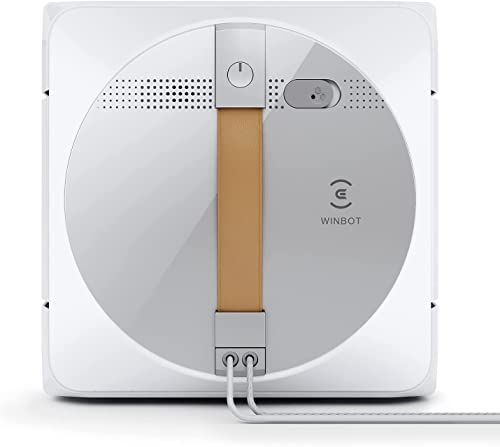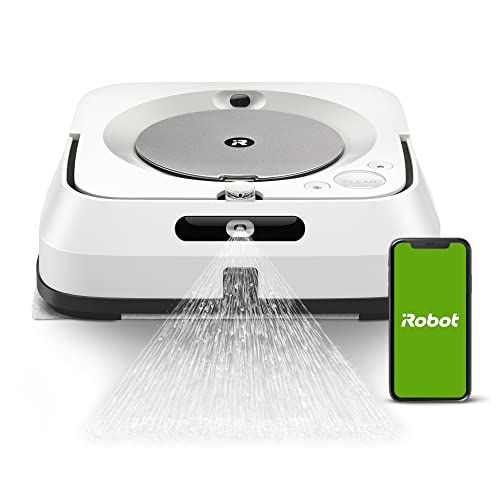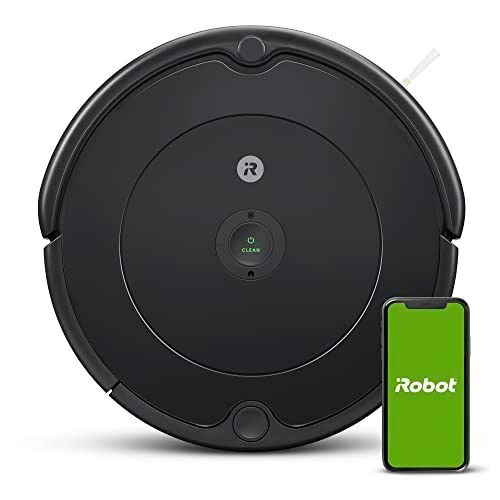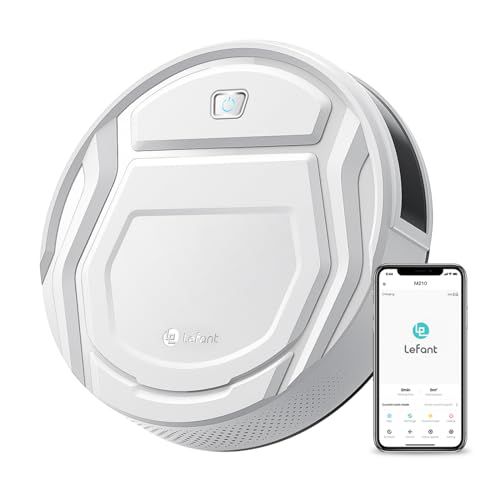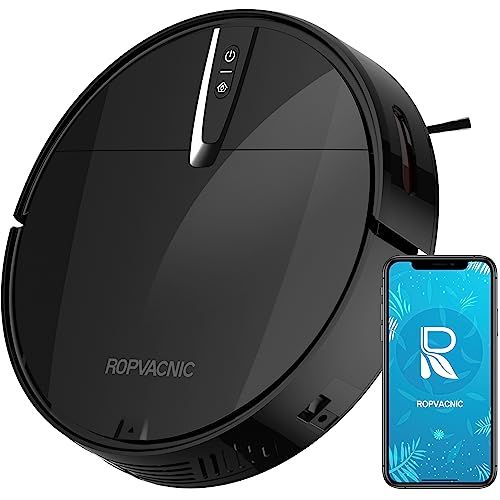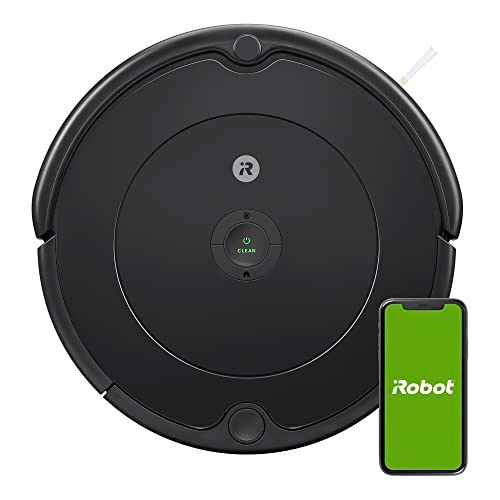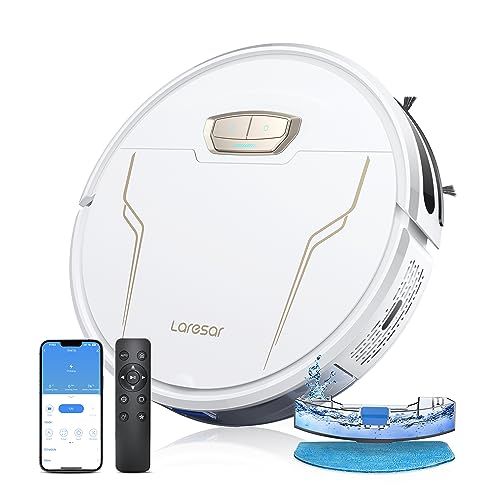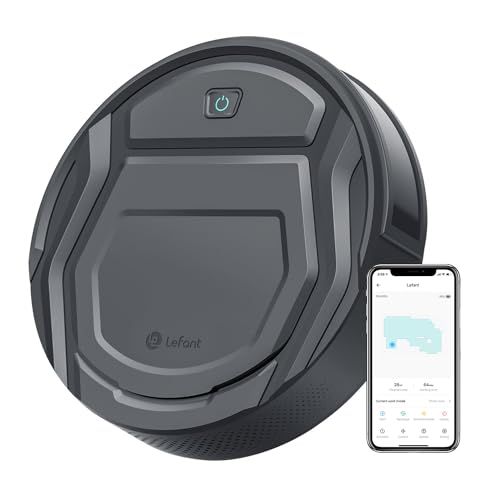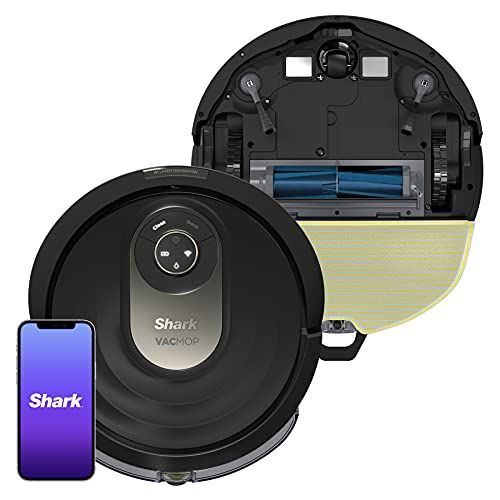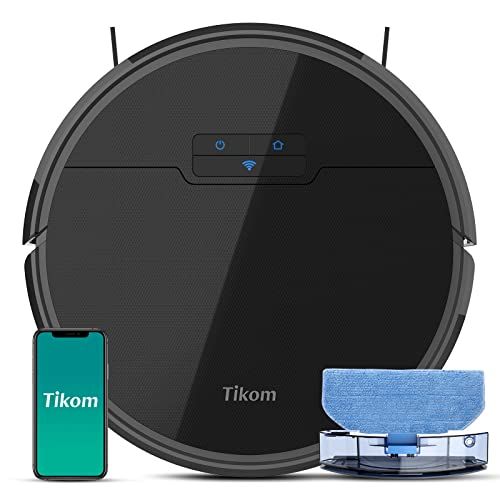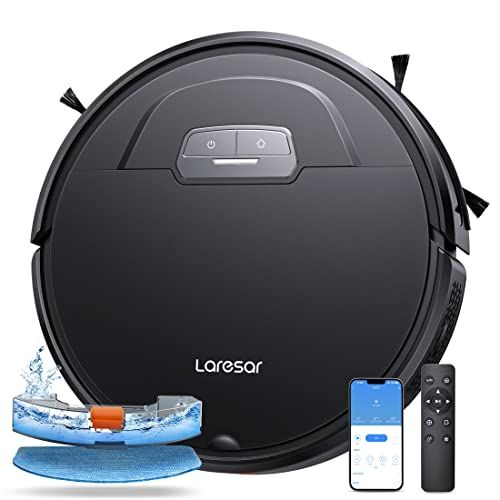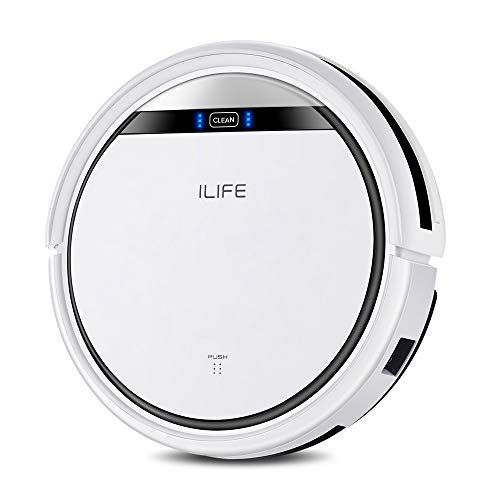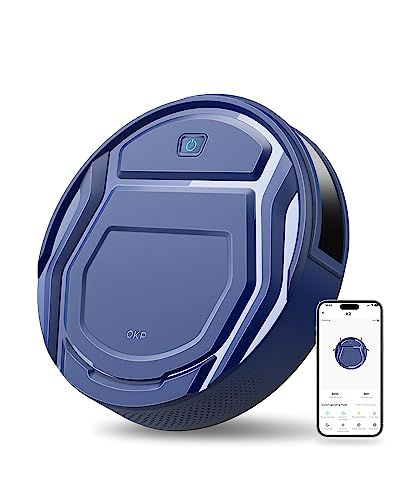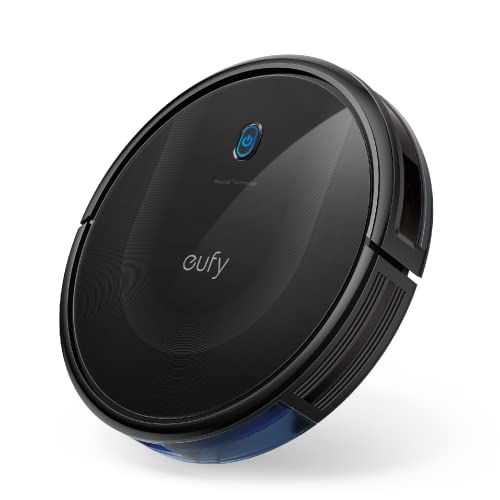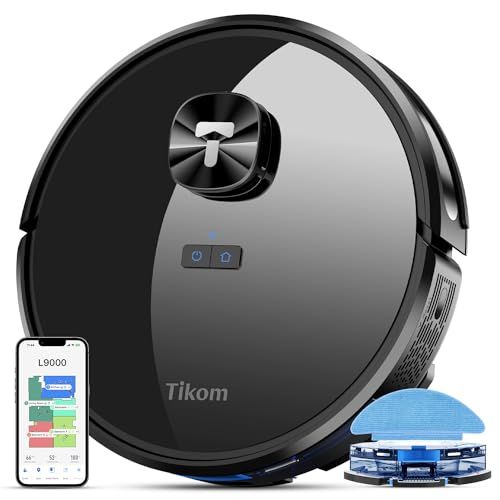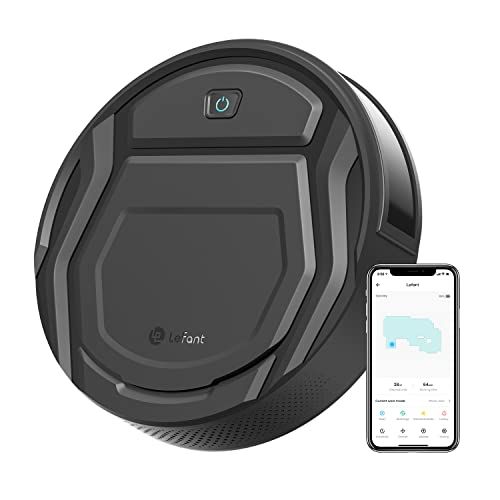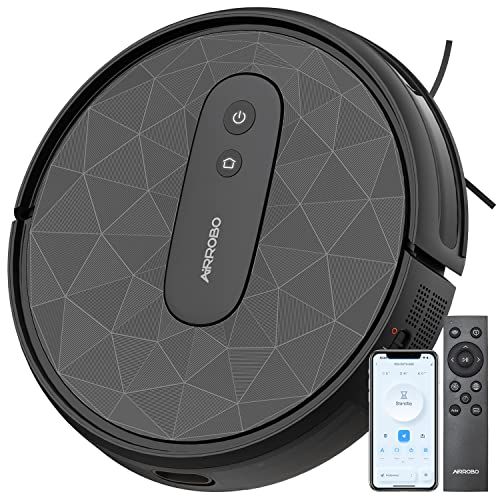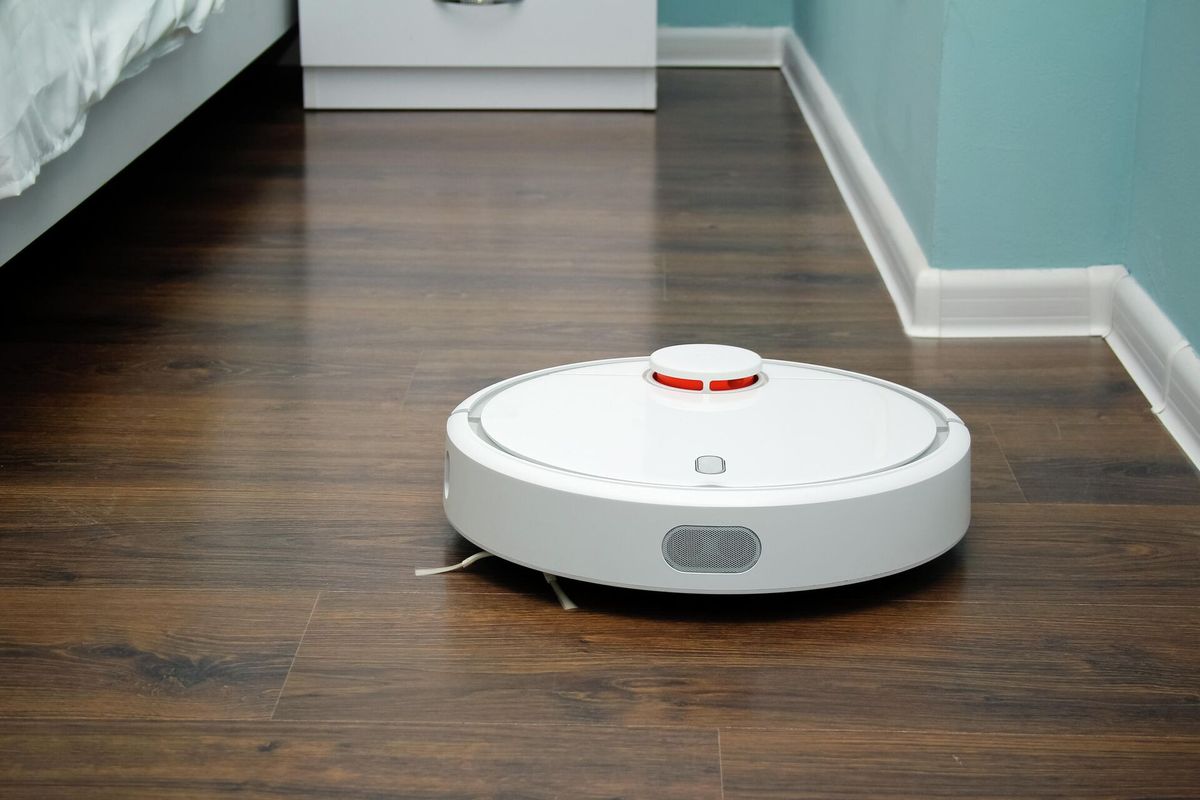
Robotic vacuums, also known as robovacs, have become an increasingly popular home appliance over the past decade. These autonomous cleaning robots use sensors and mapping technology to intelligently navigate and clean floors throughout a home.
The first commercially successful robotic vacuum cleaner was released by iRobot in 2002. Called the Roomba, this revolutionary device sparked the beginning of the robotic vacuum industry. Since then, numerous companies have entered the market, advancing robovac technologies and capabilities. Global sales of robotic vacuums now reach over $2 billion annually and continue to grow each year.
Robotic vacuums offer several compelling benefits compared to traditional manual vacuuming. They can clean floors thoroughly on a set schedule, removing dust and debris from hard floors and carpets. Robovacs are convenient, eliminating the need to manually push a heavy vacuum around the house. They can reach under furniture and clean hard-to-reach areas. Advanced models feature mapping capabilities to methodically clean entire levels of a home.
Key features of robotic vacuums include autonomous navigation, scheduling options, brink and cliff sensors, HEPA filtration, self-charging, app connectivity, mapping capabilities, high suction power, and more. With continual improvements in AI navigation, battery life, suction power, smart home integration, and other technologies, robotic vacuums are only becoming more capable and popular. For many households, robovacs have become an indispensable home cleaning tool.
How Robotic Vacuums Work
Robotic vacuums use a variety of sensors, programming, and mechanical components to autonomously vacuum floors. Here's an overview of the key internal workings:
Sensors for Navigation and Obstacle Avoidance
Robotic vacuums rely on sensor arrays to map environments and navigate floors. Common sensors include:
Camera sensors to visually identify obstacles, cliffs, and dirty spots
Infrared sensors to detect obstacles and cliffs
Laser distance sensors (LIDAR) to create spatial maps and localize the robot
Bumper sensors to detect physical contact with obstacles
Advanced processing algorithms analyze data from the sensors to chart efficient cleaning paths and avoid collisions.
Vacuum Suction System
The vacuuming system uses fans and motors to create suction airflow. The suction loosens and lifts dirt into the dustbin container. Some models use brushes and roller brushes to help dislodge debris. The suction power ranges between models but is typically strong enough for hard floors and low-pile carpets.
Charging and Battery Life
Robotic vacuums run on rechargeable lithium-ion battery packs. Battery life is 1-2 hours per charge for thorough cleans. The vacuums automatically return to a wall-mounted docking station when power is low. Some models can self-charge mid-cleaning by docking and then resuming where they left off.
Programming and Algorithms
The "smart" capabilities come from AI technologies like computer vision, simultaneous localization and mapping (SLAM), path planning algorithms, and object recognition. The AI allows the robots to intelligently navigate, adapt to new environments, and learn user habits over time. The integration of sensors, algorithms, and mechanics together enable independent and efficient automated vacuuming.
Benefits of Robotic Vacuums
Robotic vacuums offer a number of benefits that make them an appealing choice over traditional manual vacuuming:
Convenience - Robotic vacuums allow you to clean your floors even while you're away from home. Just schedule the robot to run when you're out, and it will autonomously vacuum your floors until the job is done. This frees up your time and ensures your floors get regularly cleaned without any effort on your part.
Time Savings - A robotic vacuum can clean your home in a fraction of the time it takes to manually vacuum. For example, manually vacuuming a 2000 sq ft home could take over an hour, whereas a robotic vacuum can cover the same area in 15-30 minutes. The time savings really add up over time.
Reach Hard to Access Areas - Robotic vacuums are typically low profile, allowing them to slide under beds, sofas, and other furniture. This allows them to clean areas that are difficult to reach with a traditional vacuum. No more moving furniture or vacuuming around chair and table legs.
Efficient Regular Cleaning - Robotic vacuums make it easy to clean your floors every day, or multiple times per day if desired. The consistency leads to cleaner floors overall. And frequent robotic vacuuming means your floors won't get extremely dirty, so the robot won't have to work as hard during each cleaning session.
Key Features to Look For
When purchasing a robotic vacuum cleaner, there are several key features to consider:
Suction Power
The suction power determines how well the vacuum can pick up dirt, dust, pet hair, and debris from carpets and hard floors. Look for a vacuum with strong suction, measured in air watts or pascals. More suction allows for deeper cleaning.
Battery Life
Battery life determines how long the robot can clean on a single charge. Look for a battery life of at least 60-90 minutes so the robot can finish cleaning multiple rooms without needing a recharge. Some robots will even return to their dock mid-cycle to recharge then resume cleaning.
Navigation Technology
The navigation system is what allows the robot to map the home and clean systematically and efficiently. Advanced robots use laser, camera, or sensor technology to map the space and navigate without getting stuck. This allows for thorough cleaning coverage.
Scheduling and App Control
Many robotic vacuums can be scheduled to clean at specific times through a mobile app. Look for options to schedule daily, weekly, or customized cleans. App integration also allows for remote start and control.
Surface Compatibility
Consider what types of flooring the robot can handle. Most work well on hard floors and thin carpets. Some have added brushes, rollers, or adjustable heights to clean medium to high pile carpets. Look for a robot suited to the flooring in your home.
Leading Robotic Vacuum Brands
The robotic vacuum cleaner market has rapidly expanded in recent years, with several brands emerging as leaders in the industry. Here are some of the top manufacturers producing the best robotic vacuums today:
Roomba - Since being founded in 2002, iRobot's iRobot Roomba 694, iRobot Roomba Combo i5 have become practically synonymous with robotic vacuums in general. Roomba offers a wide range of models at various price points, all focused on convenience and ease of use. Their patented 3-stage cleaning system provides top-notch suction power.
Neato - Known for their D-shape design, Neato robot vacuums emphasize mapping and navigation. Their LaserSmart mapping technology allows the vacuums to scan and map rooms efficiently. Neato bots then use this mapping data to intelligently clean in straight lines across floors.
EcoVacs - This Chinese brand offers affordable robotic vacuums with innovative mapping technology. Their DEEBOT models (Shark RV2310) utilize "Smart Navi 3.0" laser mapping and virtual boundary strips. EcoVacs vacuums can map multi-floor homes and clean efficiently via app controls.
Shark - Expanding beyond upright vacuums , SharkNinja's line of AI robot vacuums provides strong suction power starting under $200. Shark bots come integrated with advanced mapping, self-emptying bases, and voice controls via Alexa or Google Assistant.
Samsung - As a new entrant, Samsung provides POWERbot robotic vacuums focusing on raw cleaning power. Their models offer up to 10W of adjustable suction capable of handling thick carpets. With 20x more suction than average robovacs, Samsung targets pet hair removal.
Pricing Considerations
When looking at robotic vacuums, there is a wide range of prices based on the features and capabilities. Here are some key things to consider when evaluating budget vs. premium models:
Budget models typically range from $100-$400. They provide basic cleaning and navigation. While affordable, they may have shorter battery life, less suction power, minimal smart features, and fewer accessories. Brands like Eufy, ILIFE, and ECOVACS offer budget-friendly options.
Mid-range models cost around $400-$700. They balance price and performance with strong suction, decent battery life, mapping capabilities, app control, and useful features like scheduling. Top mid-range brands are Roborock, ECOVACS, ILIFE, and Shark.
Premium models start around $700-$1000+. You get advanced navigation and cleaning, long battery runtimes, powerful suction and mopping, smart home integration, self-emptying, and high-end features. Top premium brands are iRobot, Roborock, ECOVACS, and Samsung.
Value for money depends on your needs. Basic models are great starter options. Mid-range provide the best bang for buck. Premium deliver top-end performance and convenience. Evaluate the features against price to find the sweet spot for your budget.
Overall, robotic vacuums range from affordable to high-end. Focus on the performance, features and reliability to find the right balance of value for your home.
Maintenance Tips
Keeping your robotic vacuum functioning properly requires some regular maintenance. Here are some key tips for maintaining your robot vac:
Empty the Dustbin
The dustbin on your robot vac needs regular emptying so it doesn't get overloaded. Most robotic vacuums will detect when the bin is full and prompt you to empty it. Emptying once a week is a good rule of thumb.
Clean the Sensors and Brushes
Dirt, debris and hair can get tangled in the brushes and clog the sensors on your robotic vacuum. Clean them regularly by removing the parts and wiping them down with a dry cloth. Some robot vacuums have self-cleaning brushes to automate this maintenance.
Replace Filters
The filters on a robotic vacuum trap dust and allergens. Check your machine's recommended schedule, but you'll likely need to replace filters every 1-3 months for optimal performance. High-quality filters are important.
Update Software
Like any smart gadget, robots vacuums rely on software and programming. Check for app and firmware updates from the manufacturer regularly. Updates often improve cleaning efficiency and navigation.
With regular maintenance like emptying the dustbin, cleaning parts, replacing filters and updating software, your robotic vacuum will deliver optimized cleaning performance. Be sure to refer to your owner's manual for the manufacturer's specific maintenance recommendations. Consistent maintenance is key for a long-lasting robot vac.
Troubleshooting Common Issues
Like any gadget, robotic vacuums can sometimes malfunction or have technical difficulties. Here are some of the most common issues owners encounter and how to resolve them:
Connectivity Problems
If your robotic vacuum won't connect to your phone app or home WiFi, first check that the vacuum is charged. These connectivities rely on battery power. Next, make sure the vacuum is within range of your router if connecting to WiFi. Restart your phone and vacuum to refresh the connections. You can also try manually resetting your vacuum and re-connecting it to the app.
Navigation Difficulties
Robotic vacuums rely on sensors to map rooms and navigate around furniture. If your vacuum is having trouble mapping or seems to bump into objects frequently, first clean the sensors and cameras with a soft cloth. Debris like dust or hair can obstruct proper functioning. Make sure the vacuum is adjusted to the correct floor type like hardwood or carpet. You may need to adjust the sensitivity levels in the app. Clearing some space in congested areas can help too.
Battery Not Holding Charge
Rechargeable lithium-ion batteries in vacuums can degrade over time. If your vacuum battery doesn't last as long as it used to, the battery may need replacement. Check the app or manual for battery replacement instructions. Only use a compatible replacement battery from the robotic vacuum manufacturer. Refrain from fully depleting the battery each cycle and store the vacuum with at least a partial charge.
Weak Suction
Suction power declining over time is normal as filters get clogged with dust and debris. Clean or replace the filters and dust bin regularly to strengthen suction. Remove and untangle any hair or carpet fibers wrapped around the brush roll. You can also try cleaning the sensors and cameras to maximize performance. If suction seems very weak, the vacuum may need a professional servicing.
Following some basic troubleshooting and maintenance steps can resolve most common robotic vacuum issues. Be sure to consult the owner's manual as well for device-specific help.
Ideal Homes for Robotic Vacuums
When considering a robotic vacuum, it's important to think about your home's size and layout, flooring type, and whether you have pets. This can help determine what features and models will work best for you.
Home Size and Layout
Small apartments and studios under 600 sq ft are well-suited for compact robotic vacuums that can navigate tight spaces and clean around furniture legs. Models with cliff sensors are ideal to avoid falls.
For larger homes over 1,000 sq ft, look for robotic vacuums with longer battery life and stronger suction to cover more ground. Wi-Fi connectivity and mapping are useful.
Homes with multiple stories are better for advanced robotic vacuums that can map different floors and self-empty into a base station. Stair climbing ability is also beneficial.
Homes with rooms blocked off by curtains, narrow hallways, ledges or lips between rooms can impede some robotic vacuums. Opt for smart navigation that can handle these obstacles.
Pets vs No Pets
Homes with pets need robotic vacuums with high suction, tangle-free brushes, and large dust bins to handle all the fur and debris. HEPA filtration also helps reduce allergens.
For homes without pets, more affordable robotic vacuums with basic suction and filtration can suffice. Focus on navigational smarts instead.
Carpets vs Hard Floors
For wall-to-wall carpeting, choose robots with motorized brushes to agitate and deep clean carpets. Strong suction is also key.
For hard flooring like wood or tile, select robots with soft bristle brushes or rubber tracts to gently sweep without scratching. Mopping features help clean floors.
Consider your home's needs to select the ideal robotic vacuum model. Advanced smart mapping and navigation provide the most versatility to handle diverse home layouts and flooring.
The Future of Robotic Vacuums
Robotic vacuums continue to advance with new features and capabilities on the horizon. Here's a look at some key innovations we are likely to see in the future:
Advanced Navigation and AI - Robotic vacuums will become smarter at mapping homes and navigating efficiently to clean every area. Advanced AI and deep learning will enable robots to identify obstacles, remember previous cleaning paths, and intelligently plan the most effective cleaning routes. This will lead to more thorough coverage.
Integration with Smart Home - Future robotic vacuums will integrate with smart home platforms and voice assistants like Alexa. You'll be able to control, schedule, and monitor cleaning via a smart home app or using voice commands. Robots will also leverage smart home sensors to automatically start cleaning when you leave the house or reach areas in need.
New Surfaces and Areas - In addition to improving hard floor and carpet cleaning, robotic vacuums will become capable of cleaning more surfaces like stairs, furniture, blinds, and more. They will also reach new areas like under appliances and beds for a deeper clean. Specialized robots may also be designed just for windows, gutters, or other cleaning tasks.
With rapid technology improvements, robotic vacuums will become an increasingly powerful cleaning tool. They will save more time, require less effort, and deliver superior results in the years ahead. The future of automated home cleaning is very promising.
Vacuum Cleaners comparison
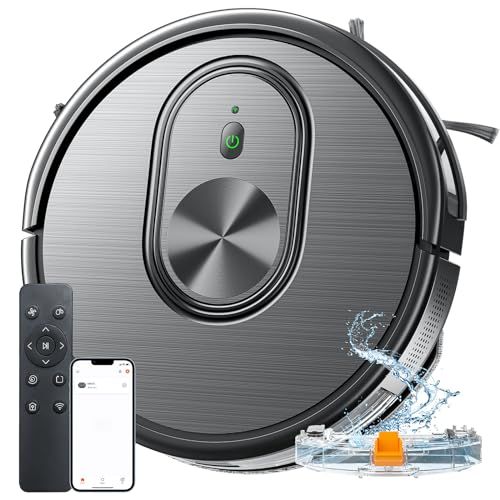 | 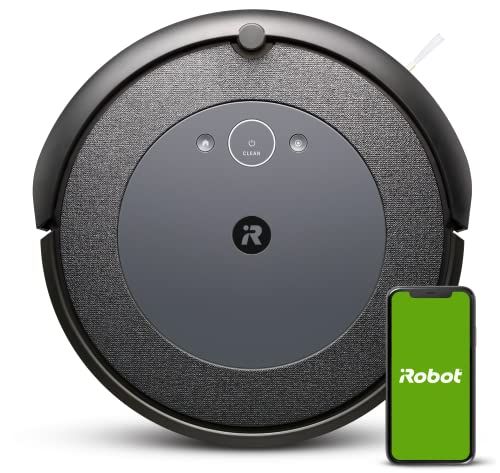 | 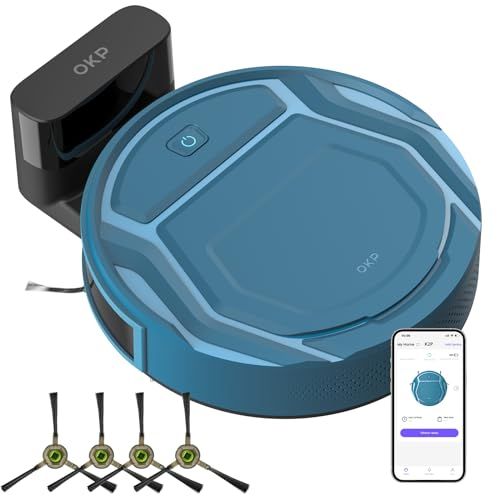 | 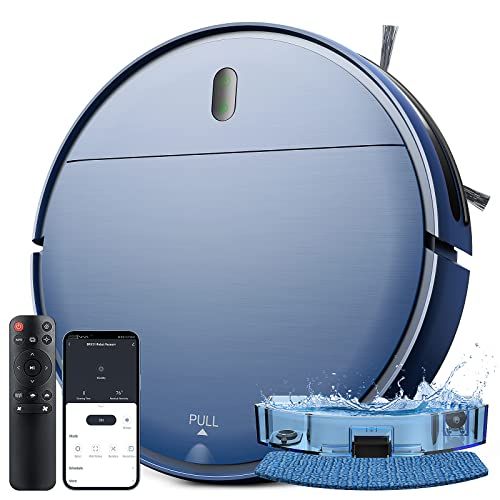 | 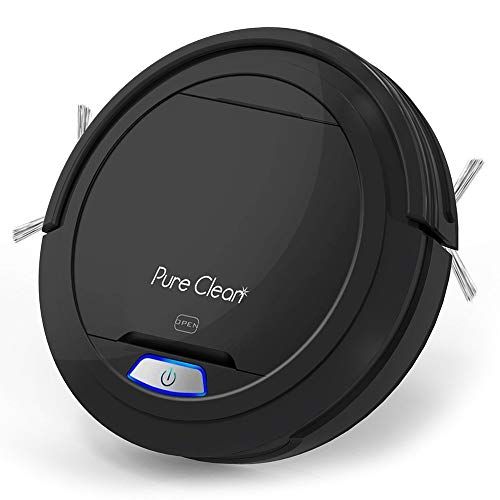 | |
|---|---|---|---|---|---|
| Model | Robot Vacuum and Mop Combo HR101 | i415020 | K2-Pro | BR151 | PUCRC26B |
| Brand | XIEBro | iRobot | OKP | ZCWA | SereneLife |
| Weight | 7.47 pounds | 10.32 pounds | 6.89 pounds | 7.98 pounds | 3.5 pounds |
| Color | Deep Black | Black | Blue | Blue | Black |
| Batteries | 1 Lithium Ion batteries required. (included) | 1 Lithium Polymer batteries required. (included) | - | 1 Lithium Ion batteries required. (included) | 1 Lithium Ion batteries required. (included) |
| Battery life | 1000 Hours | 75 minutes | 150 minutes | 100 minutes | 90 minutes |
| Customer reviews | 4.3 out of 5 stars | 4.0 out of 5 stars | 4.3 out of 5 stars | 4.0 out of 5 stars | 3.4 out of 5 stars |
| Country of origin | - | - | China | - | China |
| Special feature | <b>✅Product Model: HR101 Robot Vacuum and Mop Combo Compatible with Tuya Smart APP + Alexa</b><br> <b>✅Maximum Suction: 1600pa Suction</b><br> <b>✅Usage Time: Up to 100 minutes</b><br> <b>✅Watertank : 230mL</b><br> <b>✅Dust Box Filter Layers :Filter (washable) + filter cotton (not washable)</b><br> <b>✅Clean Mode:Auto/Spot/Edge/Manual</b><br> <b>✅Control Type: Remote Control/ App Control/ Alexa/ Google Assistant</b><br> <b>✅ Ideal for cleaning pet hair, hard floors, low pile carpet</b><br> <b>✅Product Model: HR101 Robot Vacuum and Mop Combo Compatible with Tuya Smart APP + Alexa</b><br> <b>✅Maximum Suction: 1600pa Suction</b><br> <b>✅Us… See more | Smart Mapping, Ideal for Pet Hair, Wi-Fi Connected, Compatible with Alexa | ✅ Offers comprehensive cleaning, including pet hair, hard floors, short-pile carpets, and more, with multiple cleaning modes to choose from., ✅ Utilizes intelligent motion system, capable of sensing steps and providing smart anti-drop function, ensuring efficient cleaning process., ✅ OKP Smart Vacuum Cleaner, equipped with APP and Alexa control, suitable for pet households. ✅ Offers comprehensive cleaning, including pet hair, hard floors, short-pile carpets, and more, with multiple cleaning modes to choose from., ✅ Utilizes intelligent m… See more | <b>✅Mopping and vacuuming 2-in-1 robot vacuum cleaner compatible with APP + Alexa.</b><br> <b>✅Automatic charging, 100 minutes runtime. 2.91” super-slim size & 65dB low noise & 2500mAh high-capacity li-ion battery.</b><br> <b>✅Smart movement system, perceive steps, intelligent fall prevention.</b><br> <b>✅All-round cleaning,optional cleaning modes for various messes.</b><br> <b>✅ Ideal for pet families, cleaning pet hair, hard floors, low pile carpet.</b><br> <b>✅Mopping and vacuuming 2-in-1 robot vacuum cleaner compatible with APP + Alexa.</b><br> <b>✅Automatic charging, 100 minutes runtime. 2.91” super-slim size &… See more | Low-Profile - Slides Under Furniture |
| Product dimensions | 12.04"L x 12.04"W x 2.89"H | 13.34"L x 13.26"W x 3.63"H | 11.02"L x 11.02"W x 3.09"H | 11.8"L x 11.8"W x 2.91"H | 11"L x 11"W x 2.9"H |
| Model name | Robot Vacuum and Mop Combo HR101 | i415020 | K2-Pro | BR151 | SereneLife Robot Automatic Vacuum Cleaner |
| Control method | App, Remote, Touch, Voice | App, Voice | - | - | Touch |
| Warranty description | - | - | - | - | 1 year warranty. |
| Voltage | 220 Volts | 220 Volts | - | - | 220 Volts |
| Capacity | 430 Milliliters | 0.4 Liters | - | 230 Milliliters | 0.2 Liters |
| Power source | Battery Powered | - | Battery Powered | Battery Powered | Battery Powered |
| Price | - | $349 | $599.99 | $729.99 | $119.99 |
FAQ
What are the main benefits of robotic vacuum cleaners?
Robotic vacuum cleaners offer a number of benefits over traditional vacuums. They can clean your floors automatically on a schedule, reaching areas that might be hard to access with a traditional vacuum. Robotic vacuums are very convenient, as you don't have to actively push them around to clean. They are also great for people with mobility issues or busy schedules who may not be able to vacuum as often as needed. Many robotic vacuums have advanced sensors and mapping capabilities to efficiently clean your floors.
How do robotic vacuums navigate around my home?
Most robotic vacuums have specialized sensors and mapping technology to navigate around your home. Sensors along the bumper detect obstacles and stairs to avoid collisions and falls. Many models create digital maps of the home to clean efficiently in neat rows. Some use laser mapping or visual sensors to map the house. High-end models have smart navigation with room recognition to clean zone by zone.
Do I still need to vacuum myself if I have a robotic vacuum?
While robotic vacuums can keep your floors much cleaner, most users still do some occasional vacuuming themselves. Robotic vacuums are great for daily maintenance cleaning but may miss some areas where manual vacuuming is needed every now and then. You may want to do spot vacuuming of high-traffic areas in between robotic vacuum runs. It's recommended to still vacuum manually every few weeks if you rely solely on a robot.
How long do the batteries last in robotic vacuums?
Battery life varies across robotic vacuum models, but they typically operate for 60 to 90 minutes on a single charge. The longest-running robots can vacuum for up to 2 hours. When the battery gets low, the robotic vacuums will automatically go back to their charging base to recharge, then resume cleaning where they left off. Some models have removable batteries you can swap out with a spare to continue cleaning.
Do I need to be home when my robotic vacuum is running?
No, you do not need to be home when your robotic vacuum cleans. The advantage of these devices is that you can schedule them to run automatically when you are out. Just make sure the floors are clear of obstructions, close doors to any rooms you want to restrict access to, and start the robot before leaving the house. The vacuum will clean independently until the battery needs recharging.
Can robotic vacuums pick up pet hair?
Yes, most modern robotic vacuums are equipped with brushes, agitators, and suction power effective for picking up pet hair. Models with a motorized brush roll and tangle-free extractors are ideal for homes with pets. Some robots have a special maintenance cycle to clean themselves and remove embedded pet hair after vacuuming. Checking the dust bin frequently is recommended when cleaning up after pets.
How loud are robotic vacuums?
Robotic vacuums are typically 60-70 decibels when operating. This is comparable to the volume of a normal conversation. Some higher-end models are closer to 50-60 decibels, making them very quiet. The vacuuming sounds may be occasionally louder when working harder on carpets or when the dust bin gets full. But overall, robotic vacuums are discreet enough to run when you are home without significant noise disruption.
Can I use a robotic vacuum on carpets?
Yes, many robotic vacuums work on both carpets and hard floors. To effectively deep clean carpets, the robot should have features like a motorized brush roll, suction control for carpets, and wheels that can transition from hard floors to carpets. Higher-end models may optimize suction power automatically when rolling onto a carpet. Check the product specifications to confirm the robot vacuum is designed for all floor types.
How do I maintain a robotic vacuum?
It's important to perform regular maintenance to keep your robotic vacuum cleaning properly. Empty the dust bin after every use or couple of runs. Clean the brushes, wheels and sensors with the included tools. Replace filters based on the manufacturer's timeline, around every 1-3 months. Remove any tangled hair or debris. Check for software updates and run full cleaning cycles. Follow the maintenance schedule in the user manual for best results.
Do robotic vacuums work on all floor types?
Most robotic vacuums work well on hard floors like wood, tile, vinyl and linoleum as well as low to medium pile carpets. Some higher-end models can also handle high pile carpets and rugs. However, robotic vacuums may have trouble with shag carpets, rugs with tassels or carpet fringes and loose rugs. It is best to test your robotic vacuum on different floor types before purchasing.
